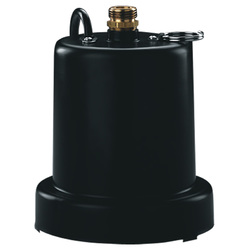 To Use Padding (Cushion that goes under the Carpet) or not to, is a question I am asked a lot when we install Carpeting in a basement or ground level over a slab. We generally recommend using padding unless there is a good likelihood the carpet can get wet, like rooms that are next to boiler/wash rooms, or areas that are prone to water seepage. See below the benefits of padding and of direct glue down installation.
If you have padding and the carpet gets wet, the padding will have to be changed in most cases.
Basic Steps To Take If You Get FloodedIn the past few years Rockland County has suffered some major floods which caused millions of dollars worth of damage. But flooding is not only caused by natural forces. Sometimes flooding is caused by a leaking pipe, leaking toilet, blocked sink or bathtub or other problems in the home. We get a lot of questions from people that their house got flooded; in this article we try to answer some of them.
If the flooding was caused by problems in your home, you have to find the cause and fix it right away otherwise the flooding will not stop. Then the first thing you need to do is remove as much water as possible using a portable water pump and a Shop vac, then fold back the carpet and remove all padding that got wet and turn on fans and dehumidifiers until area is completely dry. When the area is completely dry the carpet could be reinstalled over new padding. If the carpet was glued directly to the subfloor without padding, vacuum out as much water as possible then put fans and dehumidifiers till carpet is completely dry. (Turning on the heat helps) The carpet should not be left wet past two days because then it becomes a breeding ground for molds. If it is not possible to dry out the carpet within two days and see some molds growing, immediately remove the molds with a mold and mildew killer or a homemade cleaning solution. The place where your carpet is being dried should be well ventilated and free from moisture as molds thrive on moisture. If the flood water is dirty and might contain contaminants that will be dangerous to your health, it is best to call in a professional to assess the damage and suggest some remediation measures. Some may advise professional carpet cleaning and carpet restoration. If the damage is really bad and the carpet becomes a health hazard, the professional might suggest just disposing of the carpet altogether and replacing it with a new one. The whole floor should be thoroughly disinfected and sanitized though before a new carpet is installed. To sum it up, 1. Find source of water and fix. 2. Remove water - Use pump then water vac. 3. If there is padding remove area's that are wet. 4. Ventilate area using fans and dehumidifier. 5. Disinfect floor. |
Details
AuthorAce Flooring Blog Archives
November 2023
Categories |
|
SHOWROOM HOURS:
SUNDAY 11:00 - 3:30 MON - THUR 9:00 - 5:00 FRIDAY 9:00 - 12:00 Closed On Saturday Connect
|
Call Us Today 845-356-7225 |
2020 All Rights Reserved | Ace Flooring Dist LLC 17 Robert Pitt Dr. | Monsey, NY 10952 | 845-356-7225 | info@aceflooring.net





 RSS Feed
RSS Feed
